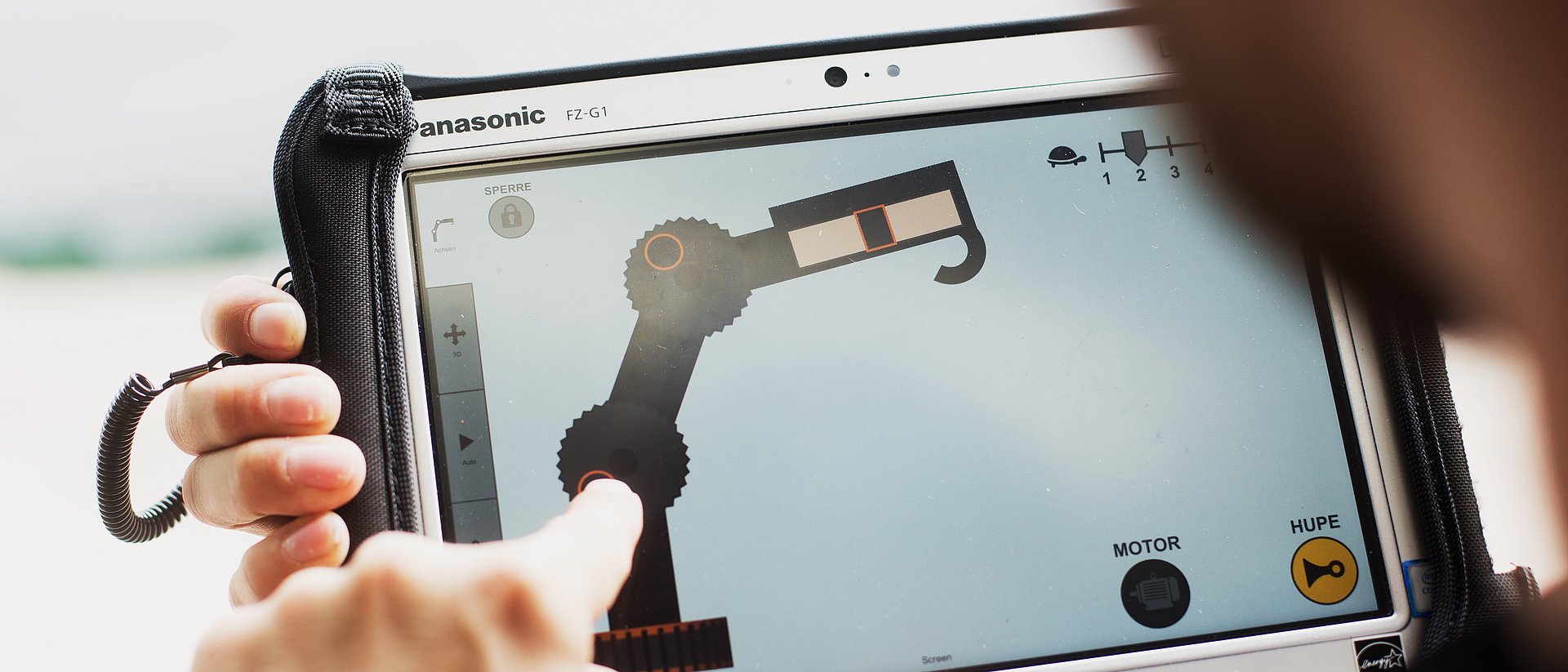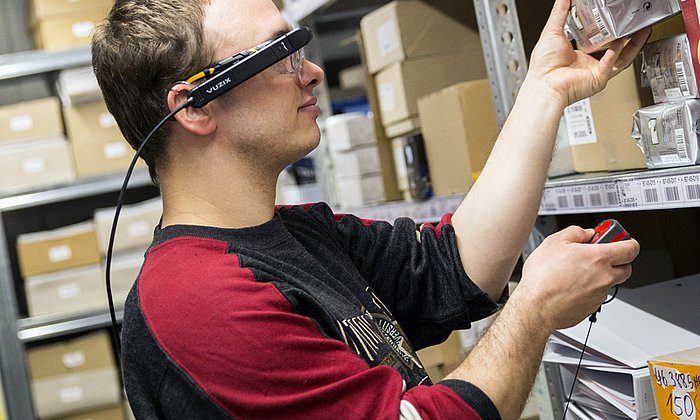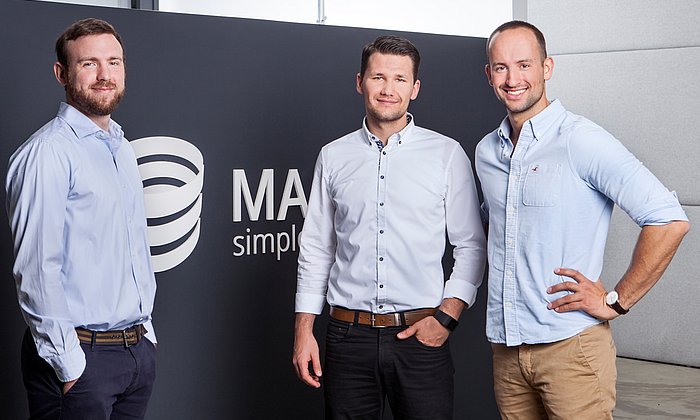Researchers develop intuitive control concept for cranes
Crane control by touchscreen

In general anyone using a crane wants to move a load from one place to another. "That means I want to move the hook which is holding the load from A to B," says Felix Top of the TUM Chair of Materials Handling, Material Flow, Logistics. However, today's conventional crane systems control not the hook, but rather the individual drives of the crane.
The reason: In the past the control levers were directly connected with the drives. There was a control lever for each joint of the crane, which could be moved in different directions. The crane operator then had to figure out which joints had to be moved and how in order to move the hook in the desired direction.
In the meantime the drives are controlled using radio signals, and the operator no longer sits in a driver's cab: Using radio controls, the crane can also be operated from outside. "But the layout of the control levers is still the same," says Top.
Joystick and touchscreen
Top is working on new control concepts together with Lorenz Prasch of the TUM Chair of Ergonomics. "A control unit should function as directly as possible," Prasch observes. "In ergonomics we speak of primary and secondary compatibility. This describes the situation when something behaves the way I expect it to. For example we expect the stove to get hotter or the music to get louder when we turn a knob to the right."
The researchers are developing three different solutions. "All the new control variations no longer control the crane, they directly control the load," says Prasch.
The new joystick control unit consists of a control module with two joysticks. One lever controls the movement of the hook in the horizontal plane. When the joystick is moved forward and to the right, the crane's hook also moves forward and to the right from the perspective of the control unit. The second joystick controls the raising and lowering of the load by pulling the lever forwards or pressing it backwards. Here all the crane's drives operate automatically, so that the hook makes exactly the desired movement.
The scientists implemented a similar principle based on a tablet: A camera on the top of the crane shows a live image. By swiping on the display the user determines the destination to which the crane should move. The load is raised and lowered using the zoom gesture. Another control application on the tablet visualizes the crane with all its drives. If a drive is moved in a particular direction with the finger, the crane also moves in this direction. This controls the direction of the crane itself, and not the direction of the load. But the user no longer has to think about which direction the drive has to be steered.
Demand for intuitive construction machinery concepts
"Our objective is that someone using the control system for the first time needs to make a maximum of one mistake in order to figure out how the system properly works," says Prasch. The control system is to make operation of the crane easy for any user, even those with no prior experience.
The researchers don't yet know whether the concepts will be adopted by industry in the future. "But intuitive concepts for construction machinery are gaining in popularity," says Top. "And we've shown that this concept can also be implemented for the crane."
- Pictures for editorial use
- Research on the intuitive load control concept was conducted at the Chair of Materials Handling, Material Flow, Logistics and at the Chair of Ergonomics of the Technical University of Munich (TUM) as part of the Bundesvereinigung Logistik e.V. (BVL) IGF research project Intuitives Laststeuerungskonzept and funded through the AiF by the German Federal Ministry for Economic Affairs and Energy based on a resolution by the German Bundestag.
Technical University of Munich
Corporate Communications Center
- Stefanie Reiffert
- stefanie.reiffert@tum.de
- +49 (0)89 289 10519
- presse@tum.de
- Teamwebsite
Contacts to this article:
Felix Top, M.Sc.
Technical University of Munich
Chair of Materials Handling, Material Flow, Logistics
Phone: +49 (89) 289 - 15951
felix.top@tum.de
Lorenz Prasch, M.Sc.
Technical University of Munich
Chair of Ergonomics
Tel: +49 (89) 289 – 15387
lorenz.prasch@tum.de

